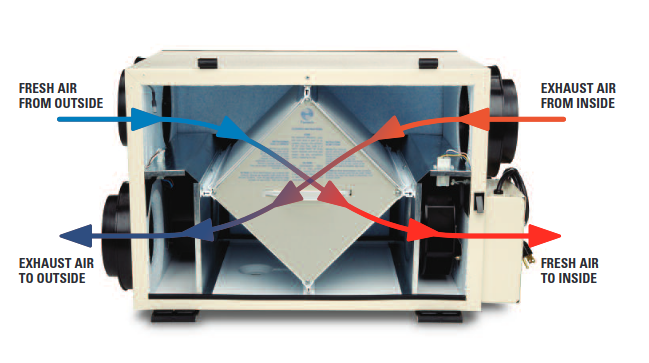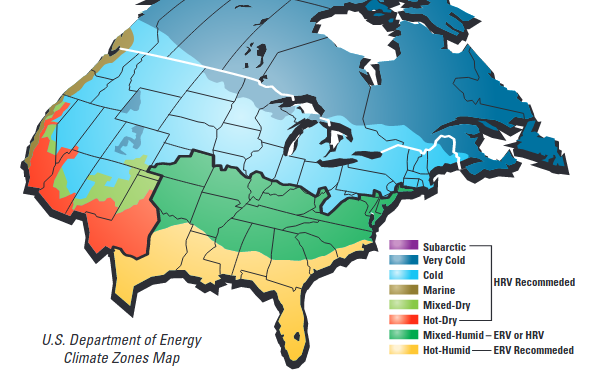What do HRVs and ERVs do?
HRVs and ERVs allows fresh air to get into the home, and makes stale air go out of the home. The fresh air coming in and the stale air going out travel through the HRV or ERV core, the stale air pre-conditions the fresh air as it’s coming in, and then the fresh air coming into the house is closer to the temperature inside of the house than before it comes in. This means that your house is conserving energy from having to heat or cool the fresh air coming into the house.
Why is this important?
According to the EPA, we spend approximately 90% of our time indoors, where the concentrations of some pollutants are often 2 to 5 times higher than typical outdoor concentrations. In order to combat this, it is important to have a constant airflow allowing air to travel in and out of the house. This filters out the stale, poluted air that has been sitting inside and replaces it with fresh air from outside.
What is the difference between an HRV and an ERV?
HRV is a heat recovery ventilator, the core does not allow for moisture to be transferred from one side of the core to the other. This means in humid conditions, the moisture of the fresh air is coming into your home. This will actually make your air conditioner work harder trying to get the moisture out of the air.

ERV is an energy recovery ventilator, the core allows the transfer of moisture from one side of the core to the other. This meanss that in humid conditions, part of the moisture of the fresh air is being transferred to the stale air going out, and your air conditioner doesn’t have to work as hard to get the moisture out of the air.
Which device is right for you?

This infographic can help determine if the HRV or the ERV is better for your home.
As you can see, in a majority of the United States, an HRV is recommended over the ERV. These are locations that are typically more dry with longer heating seasons.
As you get closer to the southeast of the United States, it is recommended to get an ERV as these locations are typically more humid with longer cooling seasons.
Click here for our available HRVs
Click here for our available ERVs
